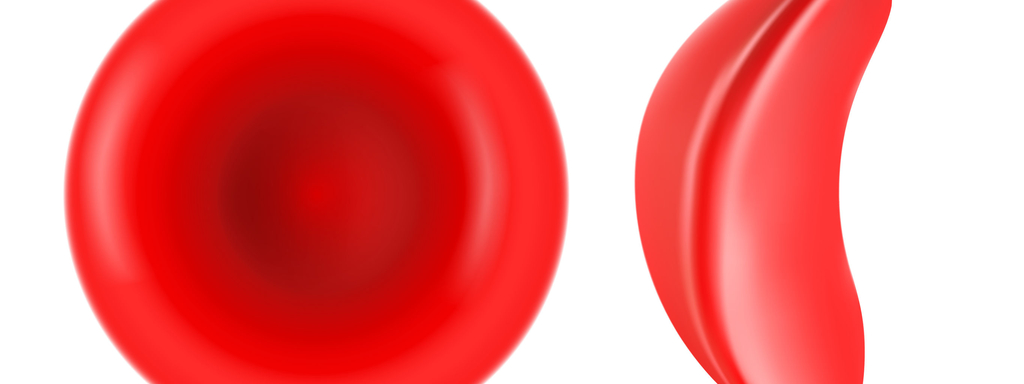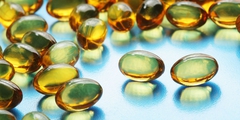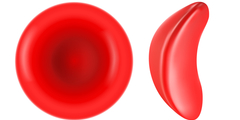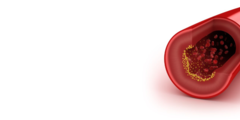
Sikkelcelziekte is een erfelijke vorm van bloedarmoede met mogelijk ernstige complicaties waaronder beroerte, pulmonale hypertensie, ernstige orgaanschade, levensbedreigende (bacteriële) infecties, blindheid en een grotere kans op vroegtijdig overlijden. De ziekte wordt meestal alleen symptomatisch behandeld, omdat de nadelen en gevaren van een beenmergtransplantatie nog niet opwegen tegen de voordelen. Diverse voedingsstoffen (waaronder omega-3-vetzuren, L-glutamine, L-arginine en zink) hebben een gunstige invloed op het ziektebeloop en verbeteren de kwaliteit van leven.
Beste bezoeker, u heeft geen toegang.
Enkel (web)abonnees hebben toegang tot tijdschriftartikelen. Het webabonnement is nog in de maak.
U kunt zich wel alvast (gratis) registreren en tal van andere webartikelen raadplegen!
Auteur
Verschenen in
Referenties
Biswas T. Global burden of sickle cell anaemia is set to rise by a third by 2050. BMJ. 2013;347:f4676.
Pace BS et al. Effects of N-acetylcysteine on dense cell formation in sickle cell disease. Am J Hematol. 2003;73:26-32.
Awoda S et al. Coagulation profile of Sudanese children with homozygous sickle cell disease and the effect of treatment with omega-3 fatty acid on the coagulation parameters. BMC Hematol. 2017;17:18.
Daak AA et al. Double-blind, randomized, multicenter phase 2 study of SC411 in children with sickle cell disease (SCOT trial). Blood Adv. 2018;2(15):1969-1979.
Daak AA et al. Effect of omega-3 (n23) fatty acid supplementation in patients with sickle cell anemia: randomized, double-blind, placebo-controlled trial. Am J Clin Nutr. 2013;97:37-44.
Okpala I et al. Pilot study of omega-3 fatty acid supplements in sickle cell disease. APMIS 2011;119:442–8.
Nederlandse Vereniging voor Hematologie. Richtlijn sikkelcelziekte 2017. https://www.hematologienederland.nl/sites/default/files/richtlijn_sikkel...
Nederlandse Vereniging voor Kindergeneeskunde. Leidraad sikkelcelziekte 2014. https://www.nvk.nl/Portals/0/richtlijnen/sikkelziekte/leidraad%20sikkelc...
Hyacinth HI et al. The role of nutrition in sickle cell disease. Nutr Metab Insights 2010:3;57–67.
Hasanato RM. Zinc and antioxidant vitamin deficiency in patients with severe sickle cell anemia. Ann Saudi Med 2006;26(1):17-21.
de Oliveira JF et al. Vitamin D in children and adolescents with sickle cell disease: an integrative review. Rev Paul Pediatr. 2015;33(3):350-5.
Schall JI et al. Vitamin A status, hospitalizations, and other outcomes in young children with sickle cell disease. J Pediatr. 2004;145(1):99-106.
Imaga NA. Phytomedicines and nutraceuticals: alternative therapeutics for sickle cell anemia. ScientificWorldJournal. 2013;2013:269659.
Ohnishi ST et al. Sickle cell anemia: a potential nutritional approach for a molecular disease. Nutrition. 2000;16(5):330-338.
Daak AA et al. Docosahexaenoic and eicosapentaenoic acid supplementation does not exacerbate oxidative stress or intravascular haemolysis in homozygous sickle cell patients. Prostaglandins Leukot Essent Fatty Acids. 2013;89(5):305-11.
van der Dijs FP et al. Elevated homocysteine levels indicate suboptimal folate status in pediatric sickle cell patients. Am J Hematol. 1998;59(3):192-8.
van der Dijs FP et al. Optimization of folic acid, vitamin B(12), and vitamin B(6) supplements in pediatric patients with sickle cell disease. Am J Hematol. 2002;69(4):239-46.
Rovner AJ et al. High risk of vitamin D deficiency in children with sickle cell disease. J Am Diet Assoc. 2008;108(9):1512-6.
Prasad AS. Zinc deficiency in patients with sickle cell disease. Am J Clin Nutr 2002;75:181-2.
Temiye EO et al. Relationship between painful crisis and serum zinc level in children with sickle cell anaemia. Anemia. 2011;2011:698586.
Prasad AS et al. Effect of zinc supplementation on incidence of infections and hospital admissions in sickle cell disease (SCD). Am J Hematol. 1999;61(3):194-202.
Schimmel M et al. Urinary zinc loss in sickle cell disease primarily due to increased bone degradation. Am J Hematol. 2016;91(6):E311-2.
De Franceschi L et al. Oral magnesium supplements reduce erythrocyte dehydration in patients with sickle cell disease. J Clin Invest. 1997;100(7):1847-52.
Daak AA et al. Omega 3 (n-3) fatty acids down-regulate nuclear factor-kappa B (NF-κB) gene and blood cell adhesion molecule expression in patients with homozygous sickle cell disease. Blood Cells Mol Dis. 2015;55(1):48-55.
Daak A et al. Omega-3 fatty acids are a potential therapy for patients with sickle cell disease. Nat Rev Dis Primers. 2018;4(1):15.
Sins JW et al. Pharmacotherapeutical strategies in the prevention of acute, vaso-occlusive pain in sickle cell disease: a systematic review. Blood Adv. 2017;1(19):1598-1616.
Tomer A et al. Reduction of pain episodes and prothrombotic activity in sickle cell disease by dietary n-3 fatty acids. Thromb Haemost. 2001;85(6):966-74.
L-glutamine (Endari) for sickle cell disease. Med Lett Drugs Ther 2018;60(1539):21-22.
Ortiz de Montellano PR. A new step in the treatment of sickle cell disease. Biochem. 2018;57(5):470-471.
Niihara Y et al. A phase 3 trial of L-glutamine in sickle cell disease. N Engl J Med 2018;379:226-31. Niihara Y et al. L-Glutamine therapy reduces hospitalization for sickle cell anemia and sickle
β0-thalassemia patients at six months: a phase II randomized trial. Clin Pharmacol Biopharm. 2014;3:116.
Nur E et al. Oxidative stress in sickle cell disease; pathophysiology and potential implications for disease management. Am J Hematol. 2011;86:484-489.
Nur E et al. N-acetylcysteine reduces oxidative stress in sickle cell patients. Ann Hematol. 2012;91:1097-1105.
Sins JW et al. Effect of N-acetylcysteine on pain in daily life in patients with sickle cell disease: a randomised clinical trial. Br J Haematol. 2017 Jun 23.
Reid M et al. In vivo rates of erythrocyte glutathione synthesis in adults with sickle cell disease. Am J Physiol Endocrinol Metab. 2006;291:E73-E79.
Nolan VG et al. Prevalence of vitamin D deficiency in sickle cell disease: a systematic review. PLoS One. 2015;10(3):e0119908.
Adegoke SA et al. Influence of serum 25-hydroxyvitamin D on the rate of pain episodes in Nigerian children with sickle cell anaemia. Paediatr Int Child Health. 2017;37(3):217-221.
Arlet JB et al. Relationship between vitamin D deficiency and bone fragility in sickle cell disease: a cohort study of 56 adults. Bone. 2013;52(1):206-11.
Lee MT et al. Randomized phase 2 trial of monthly vitamin D to prevent respiratory complications in children with sickle cell disease. Blood Adv. 2018;2(9):969-978.
Oztas Y et al. Vitamin D deficiency and its association with inflammatory markers, lipid profile and regulatory T-cells in pediatric sickle cell disease patients. Indian J Hematol Blood Transfus. 2018;34(3):480-485.
Adegoke SA et al. Relationship between serum 25-hydroxyvitamin D and inflammatory cytokines in paediatric sickle cell disease. Cytokine. 2017;96:87-93.
Dougherty KA et al. Safety and efficacy of high-dose daily vitamin D3 supplementation in children and young adults with sickle cell disease. J Pediatr Hematol Oncol. 2015;37(5):e308-15.
Morris CR et al. A randomized, placebo-controlled trial of arginine therapy for the treatment of children with sickle cell disease hospitalized with vaso-occlusive pain episodes. Haematologica. 2013;98(9):1375-82.
Morris CR. Alterations of the arginine metabolome in sickle cell disease: a growing rationale for arginine therapy. Hematol Oncol Clin North Am. 2014;28(2):301-21.
Bakshi N et al. The role of the arginine metabolome in pain: implications for sickle cell disease. J Pain Res. 2016;9:167-75.
Marealle AI et al. A pilot study of a non-invasive oral nitrate stable isotopic method suggests that arginine and citrulline supplementation increases whole-body NO production in Tanzanian children with sickle cell disease. Nitric Oxide. 2018;74:19-22.
Bai Y et al. Increase in fasting vascular endothelial function after short-term oral L-arginine is effective when baseline flow-mediated dilation is low: a meta-analysis of randomized controlled trials. Am J Clin Nutr. 2009;89(1):77-84.
Osunkwo I. Complete resolution of sickle cell chronic pain with high dose vitamin D therapy. J Pediatr Hematol Oncol. 2011;33:549-551.
Goodman BM 3rd et al. Prevalence of vitamin D deficiency in adults with sickle cell disease. J Natl Med Assoc. 2010;102(4):332-5.
Than NN et al. Magnesium for treating sickle cell disease. Cochrane Database Syst Rev. 2017;4:CD011358.





